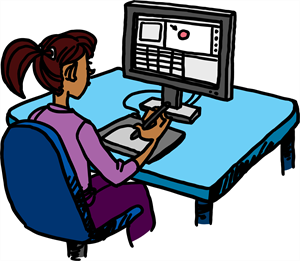- Modules
- Animation Techniques
- Digital Animation
Digital Animation
T-PRIN-002-003
Digital animation encompasses all the animation techniques that are done exclusively with the use of computers. With digital animation, it is possible to do both 2D (two-dimensional) and 3D (three-dimensional) animation.

Here are some of the digital animation techniques.
Digital Cut-out Animation
Digital cut-out animation is done using cut-out puppets for character animation. In this type of animation, characters are created by using a separate drawing for each part of its body (head, neck, torso, arms, legs, etc.) which are then rigged together, via the computer software, like a traditional puppet. Once the puppet is created, it can be added to the scene to be animated frame-by-frame.
Paperless Animation
With paperless animation, the animator will often need to hand-draw characters, frames, background and layout directly on the computer using an electronic pressure-sensitive drawing tablet. This technique is very similar to traditional animation in its process, the main difference being that it's all done on the computer.
3D Animation
Three-dimensional animation requires that, before animating it, a character must be built and modeled in the 3D animation software. They are then rigged with a virtual skeleton. From there, a character can be integrated into a scene and animated like a digital puppet, frame-by-frame.

Motion Capture
The motion capture technique consists of recording the movement of a person, often the performance of an actor, and using the recorded information to animate a digital 2D or 3D character.
Time Estimated 10 mins
Difficulty Level Beginner